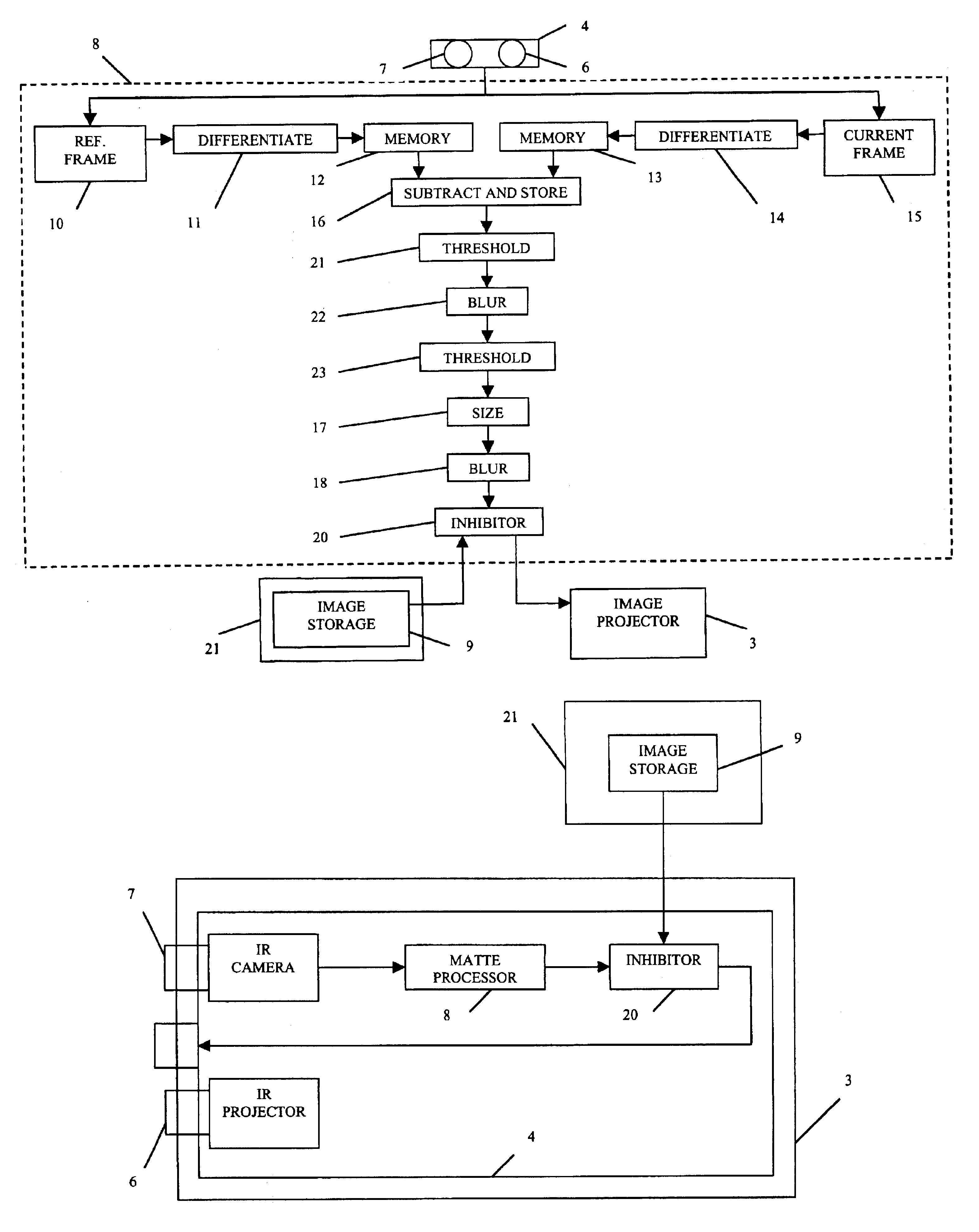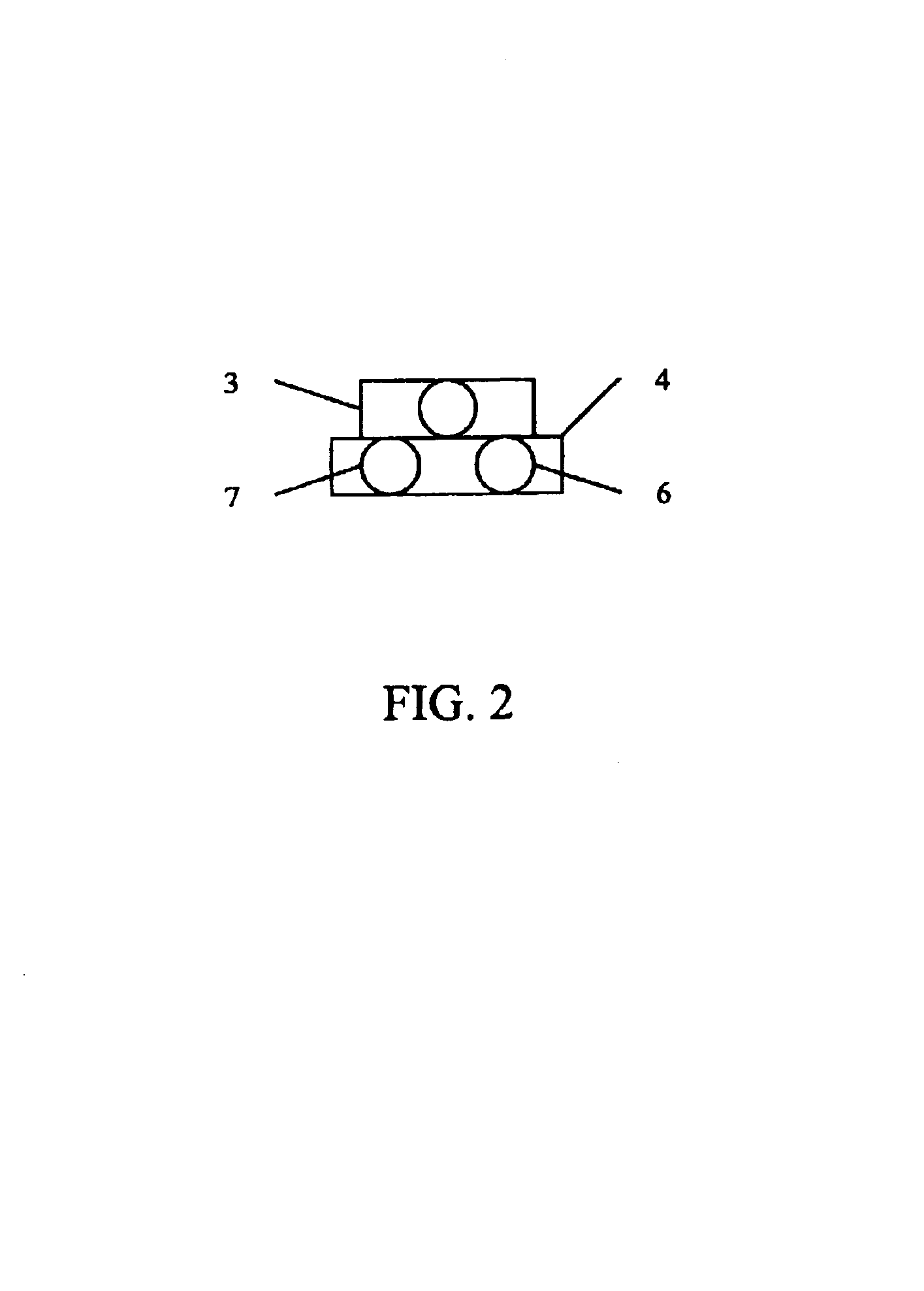Generating an inhibit signal by pattern displacement
a technology of inhibit signal and pattern displacement, which is applied in the direction of color television details, television systems, instruments, etc., can solve the problems of destroying a portion of the matte, and affecting the presentation effect of the audience,
- Summary
- Abstract
- Description
- Claims
- Application Information
AI Technical Summary
Benefits of technology
Problems solved by technology
Method used
Image
Examples
Embodiment Construction
The functions of image storage (10,15,12, 13), signal differentiation (11,14), signal subtraction (16), blurring and sizing (17,18,22), greater than and less than comparison (21,23), and multiplication (20) are well known computer functions. The infrared projector 6 may be a film slide projector equipped with an incandescent lamp and incorporating a dichroic or other glass filter to reflect or absorb visible light. The infrared camera 7 may be any small video camera with dichroic or gelatin filter to reflect or absorb visible light. The video projector 3 may be any video projector receiving a video signal. The unique pattern may be a bandwidth limited random noise pattern, or a pattern simulating a bandwidth limited random noise.
The required computational functions listed above, if not performed in computer 21, are performed by programmable devices such as field programmable logic devices, or digital signal processors available from a variety of sources, the programming of which is ...
PUM
 Login to View More
Login to View More Abstract
Description
Claims
Application Information
 Login to View More
Login to View More - R&D
- Intellectual Property
- Life Sciences
- Materials
- Tech Scout
- Unparalleled Data Quality
- Higher Quality Content
- 60% Fewer Hallucinations
Browse by: Latest US Patents, China's latest patents, Technical Efficacy Thesaurus, Application Domain, Technology Topic, Popular Technical Reports.
© 2025 PatSnap. All rights reserved.Legal|Privacy policy|Modern Slavery Act Transparency Statement|Sitemap|About US| Contact US: help@patsnap.com



